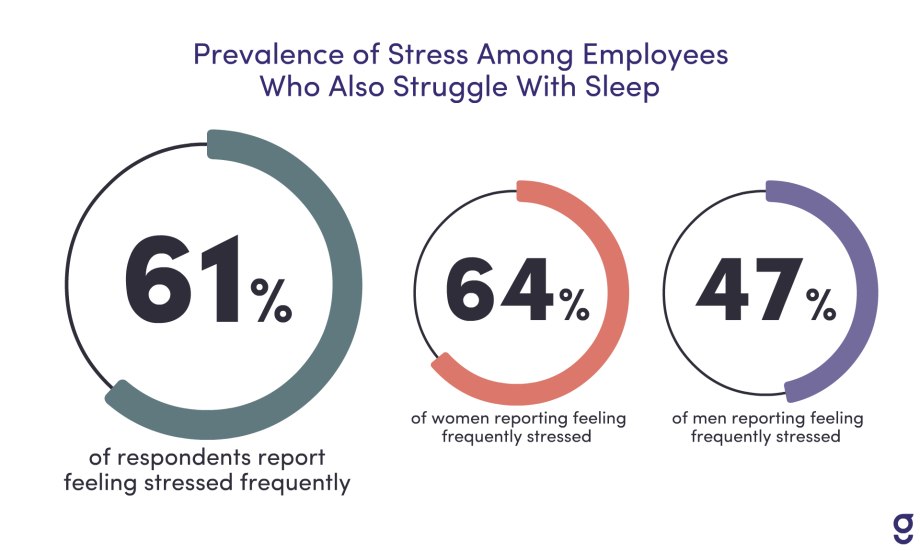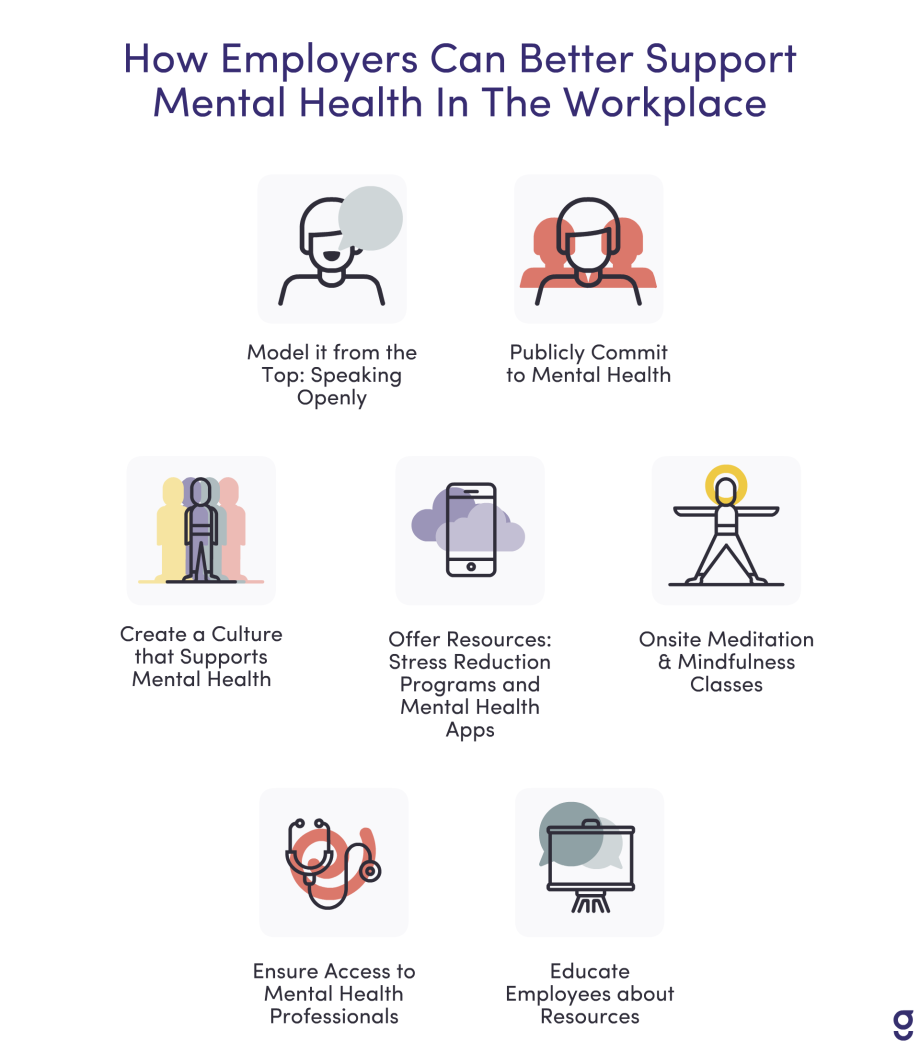How Employers Can Support Mental Health in the Workplace
Mental health is a key component of overall health and wellness. It is also an active challenge for many adults. An estimated 20% of adults have a form of mental illness, but only 45% of those people receive care for their conditions. A much larger percentage report high levels of stress, which leads to mental health challenges. In a Goodpath survey, 2 out of 3 respondents reported strong feelings of stress, with 61% of respondents “feeling stressed frequently.” The level of stress reported differed by gender, with 64% of women reporting feeling frequently stressed versus 47% of men.

The Workplace Affects Mental Health
The workplace is shown to be a key contributor to poor mental health, with job stress, work relationships, and long working hours all linked to worse overall mental health. Employers should see mental health as a top priority, as living and working with a mental health disorder is extremely challenging. Employees suffering are not able to produce their best work, with 61% saying their productivity was affected. In addition, mental health is costly to employers, with expenses increasing 10% annually over the last 5 years. Depression alone costs employers an estimated $210 billion each year in healthcare and workplace costs.
The workplace affects employees' mental health and their willingness to seek support. In a survey of 1,500 employees, over 33% said that their work contributed to their mental health condition. However, only 40% of those employees actually talked to someone at work about their mental health. When they did open up, almost 50% did not have a good experience and 59% did not feel that their workplace supports mental health. With this in mind, it is imperative that employers implement strategies to help employees feel more comfortable seeking mental health care and support.

7 Strategies for Employers to Support Mental Health Care
Employers can do more to support employees’ mental health. There are simple steps that employers can take to create a workplace experience that better supports employees’ comfort with talking about mental health and seeking care for mental health issues.
1. Model it from the Top: Speaking Openly
The actions of employees are driven by the actions of leadership, both consciously and subconsciously. When company leadership speaks openly about mental health and seeking mental health care, it normalizes the practice for the rest of employees. For example, a team manager talking about starting therapy for anxiety shows their team that seeking help is something both normal and encouraged.
2. Publicly Commit to Mental Health
Issuing a statement to all employees, and even external stakeholders, about a commitment to mental health in the workplace shows a deep level of dedication to supporting wellbeing. A statement also gives employees a formal reference to use for difficult conversations. The American Bar Association and 205 members across large law firms and employers launched a “Wellbeing Pledge” to encourage employers to improve conditions for employees in a profession known for its high stress.
3. Create a Culture that Supports Mental Health
Company culture is integral to supporting employee mental health. A culture that prioritizes output and returns over the employee experience will breed stress which leads to mental health challenges. Instead, companies can encourage employees to both do good work and take care of themselves. For example, encouraging employees to use all of their vacation days can have a profound effect on stress and therefore mental health.

4. Offer Resources: Stress Reduction Programs and Mental Health Apps
It is critical that employees also have resources to improve their mental health. Stress management programs can help employees build resilience to support their mental health in the long-term. Mental and emotional health apps are easily accessible to employees and have a low barrier to entry, encouraging use. Over 80% of employees surveyed said they would use a stress management program or a mental and emotional health app, indicating that these are in high demand by employees.
5. Onsite Meditation & Mindfulness Classes
Meditation and mindfulness are proven to reduce stress, increase resilience, and lessen symptoms of anxiety and depression. The techniques can be practiced anywhere, making them useful strategies for employees to have at their disposal. Offering classes and sessions at work is a great way to encourage employees to learn and use meditation and shows a public commitment to employee mental health.
6. Ensure Access to Mental Health Professionals
It is critical that any employee who needs or wants professional help has access to it. Employers can consider one or all of the following: access to an onsite professional, coverage for offsite, and/or digital mental health care.
When reviewing benefits packages, it is important that mental health be adequately covered and accessible. Offering access to digital care can increase access and make it more convenient for employees to seek care.
Related article:
How Companies Can Reduce Healthcare Costs
7. Educate Employees about Resources
Offering mental health support will only work if employees use the resources. Employers should ensure they use educational outlets, such as webinars and newsletters, to tell employees about which benefits they have access to and how to utilize them. For example, if digital mental health support is covered, employers should tell employees how to sign-up, how much the service will cost (if at all), and reassure them about privacy and confidentiality.
At Goodpath, we know that mental and physical health are connected. Goodpath integrative care programs address mental health in our whole-person approach to back and joint pain, sleep, and digestive health.
Goodpath programs can be offered as a benefit that covers a wider range of employees than point solutions and using techniques that lead to greater adoption rates than traditional programs. Get started here.
